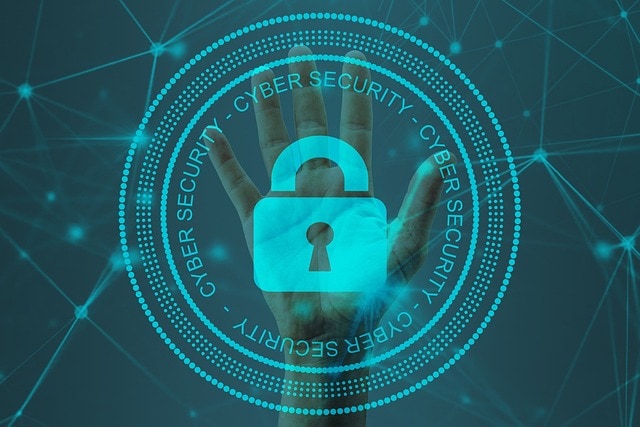When it comes to ensuring the transactions and communication in your business are kept safe, the threat of fraud looms large. Email fraud and credit card fraud, in particular, have become increasingly sophisticated and pose significant challenges for businesses of all shapes and sizes. As the digital landscape evolves, so do cybercriminals’ tactics. Consequently, you must evolve your methods of protecting your business from email and credit card fraud.
Read on to learn some helpful strategies and tools you can use to fortify your business against the perils of email and credit card fraud.
Unmasking the Deceptive Tactics behind Email Fraud
Email, the cornerstone of modern communication, has also become a breeding ground for fraudulent activities. It makes sense, doesn’t it? Emails are a trusted means of communication, so we naturally assume all emails (except spam) are trustworthy. Because of this, cybercriminals employ various tactics to deceive unsuspecting individuals within your organization and gain access to your business. From phishing to impersonation, the arsenal of email fraud is diverse and constantly evolving.
Here are some strategies you can use to help protect your business from email fraud:
Make Your Team the First and Best Line of Defense
An informed and vigilant team is the best defense against email fraud. Conduct regular training sessions to educate your employees about the different forms of email fraud, including phishing attempts and social engineering. Teach them to recognize suspicious emails, check sender details, and verify unexpected requests for sensitive information.
Implement Advanced Email Security Solutions
Basic spam filters are no longer sufficient in the battle against sophisticated email fraud. Invest in advanced email security solutions, especially those that use machine learning and artificial intelligence to identify and block fraudulent emails. These solutions can analyze patterns, detect anomalies, and prevent malicious emails from reaching your employees’ inboxes.
Add an Extra Layer of Protection with Multi-Factor Authentication (MFA)
Email accounts are often the gateway to sensitive business information. Implementing multi-factor authentication adds an extra layer of security by requiring users to verify their identity through multiple steps. Even if login credentials are compromised, MFA acts as a barrier, thwarting unauthorized access.
Regularly Update Security Policies
Cybersecurity is an ever-changing thing, and your defense strategies should evolve to match. Regularly update and reinforce security policies within your organization. This includes guidelines for password management, email usage, and procedures for reporting suspicious activities. A well-informed and disciplined team is a formidable defense against email fraud.
Safeguarding Financial Transactions Against Credit Card Fraud
Credit card fraud poses a direct threat to the financial health of your business. With the increasing reliance on digital transactions, it’s imperative to implement measures that protect your business and your customers from falling victim to fraudulent activities.
Try the following to protect your business from credit card fraud:
Shield Financial Data with Encryption
When it comes to credit card transactions, encryption is your ally. Ensure that all financial data transmitted online, whether it’s through your website or internal systems, is encrypted. This adds an additional layer of protection, making it significantly more challenging for cybercriminals to intercept and misuse sensitive information.
Meet Industry Standards with PCI DSS Compliance
The Payment Card Industry Data Security Standard (PCI DSS) is a set of security standards designed to ensure that all companies that accept, process, store, or transmit credit card information maintain a secure environment. Complying with PCI DSS not only protects your business but also builds trust with your customers, assuring them that their financial information is handled with the utmost care.
Identify Vulnerabilities with Regular Security Audits
Conduct regular security audits to identify and address potential vulnerabilities in your payment systems. This includes reviewing your network security, access controls, and monitoring systems for any unusual activities. Proactive measures can prevent credit card fraud by closing potential loopholes before they can be exploited.
Stay One Step Ahead with Fraud Detection and Prevention Tools
Invest in advanced fraud detection and prevention tools that leverage artificial intelligence and machine learning algorithms. These tools can analyze transaction patterns, detect anomalies, and identify potentially fraudulent activities in real-time. By staying one step ahead of cybercriminals, you can minimize the impact of credit card fraud on your business.
Uniting Forces Against Fraud
While email fraud and credit card fraud are distinct threats, a holistic approach to cybersecurity is a good call for business owners to make. Combining strategies to protect both communication channels and financial transactions creates a stronger defense system that significantly reduces the risk of falling victim to fraudulent activities.
Here are ways to protect against both credit card and email fraud:
Swift Incident Response Plan
Prepare for the worst-case scenario by developing a comprehensive incident response plan. This plan should outline the steps to be taken during a security breach, including communication protocols, legal considerations, and strategies for minimizing the impact on your business and customers.
Collaborate with Financial Institutions to Strengthen Your Defenses
Forge strong partnerships with your financial institutions. They often have advanced fraud detection systems in place and can provide additional layers of security for your transactions. Regular communication with your bank can enhance your ability to respond swiftly to potential threats.
Build Trust Through Transparency in Customer Communication
In the event of a security incident, transparent communication with your customers is key. Keep them informed about the steps you’re taking to address the situation and guide them on how they can enhance their security. Building a relationship of trust goes a long way toward mitigating the impact of a security breach.
A Resilient Future Awaits
The battle against email and credit card fraud is ongoing, but with the right strategies and tools, your business can stand tall against the tide of cyber threats. The key to keeping your business safe is to take a proactive approach to defense, as this allows your business to remain resilient and successful at the same time.
CMIT Solutions of Northern Shenandoah Valley can help protect your business from cybercriminals who mean you harm. Contact us today and get the piece of cybersecurity your business needs to thrive.





